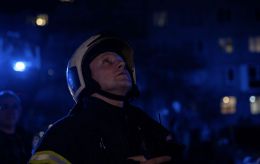Electronic warfare at war against Russia: Key to trench war success
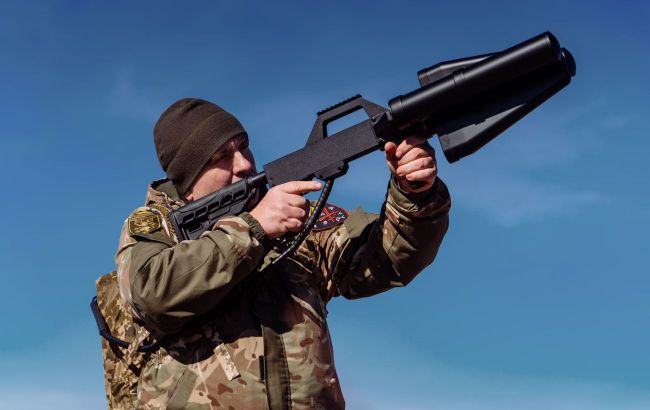 Ukraine is developing a wide range of electronic warfare systems - from anti-drone guns to stationary systems (photo: savenergy.info)
Ukraine is developing a wide range of electronic warfare systems - from anti-drone guns to stationary systems (photo: savenergy.info)
Electronic warfare is playing an increasingly important role in modern conflicts. The Russian-Ukrainian war is no exception: Valerii Zaluzhnyi, the Commander-in-Chief of the Armed Forces of Ukraine, believes that electronic warfare is the key to victory in the drone war, but Russia still retains a significant advantage in this area. Read more about the war of signals, the potentials of both armies and how electronic warfare affects the course of the war in RBC-Ukraine's article.
The material is based on a report by the Institute for the Study of War (ISW), a report by the Royal United Services Institute for Defense Studies (RUSI, UK), publications by Defense Express, an article by the Commander-in-Chief of the Armed Forces of Ukraine Valerii Zaluzhnyi for The Economist, and comments by experts Kostiantyn Kryvolap and Oleksandr Kovalenko.
What is electronic warfare: detect and blind
The Russian-Ukrainian war is being waged not only with missiles, drones, tanks, artillery, and infantry. An equally important battle is taking place in the invisible electromagnetic spectrum. The main combat units here are various sensors, radars, and radio equipment. They neutralize enemy equipment, create jamming, suppress communication, and protect troops from similar enemy attacks.
In simple terms, electronic warfare is a set of systems that conduct electromagnetic combat, where instead of tanks and guns, there are sophisticated electronics, and instead of shells and missiles, there are waves and radio signals.
They perform the following functions: suppression - the disruption or reduction of the effectiveness of enemy systems (using jamming, false targets, and other methods); protection - the neutralization of enemy electronic warfare, protection of objects and positions from homing weapons, and reconnaissance equipment; intelligence - collecting information based on interception of signals through human communication channels, radar stations, radio interference stations, and other means.
Strategic-level electronic warfare systems cover the territory within a radius of hundreds to thousands of kilometers. Operational and tactical ones - for several dozen kilometers. In the context of the Russian-Ukrainian war, the so-called "trench electronic warfare" systems that directly protect combat positions have become equally important.
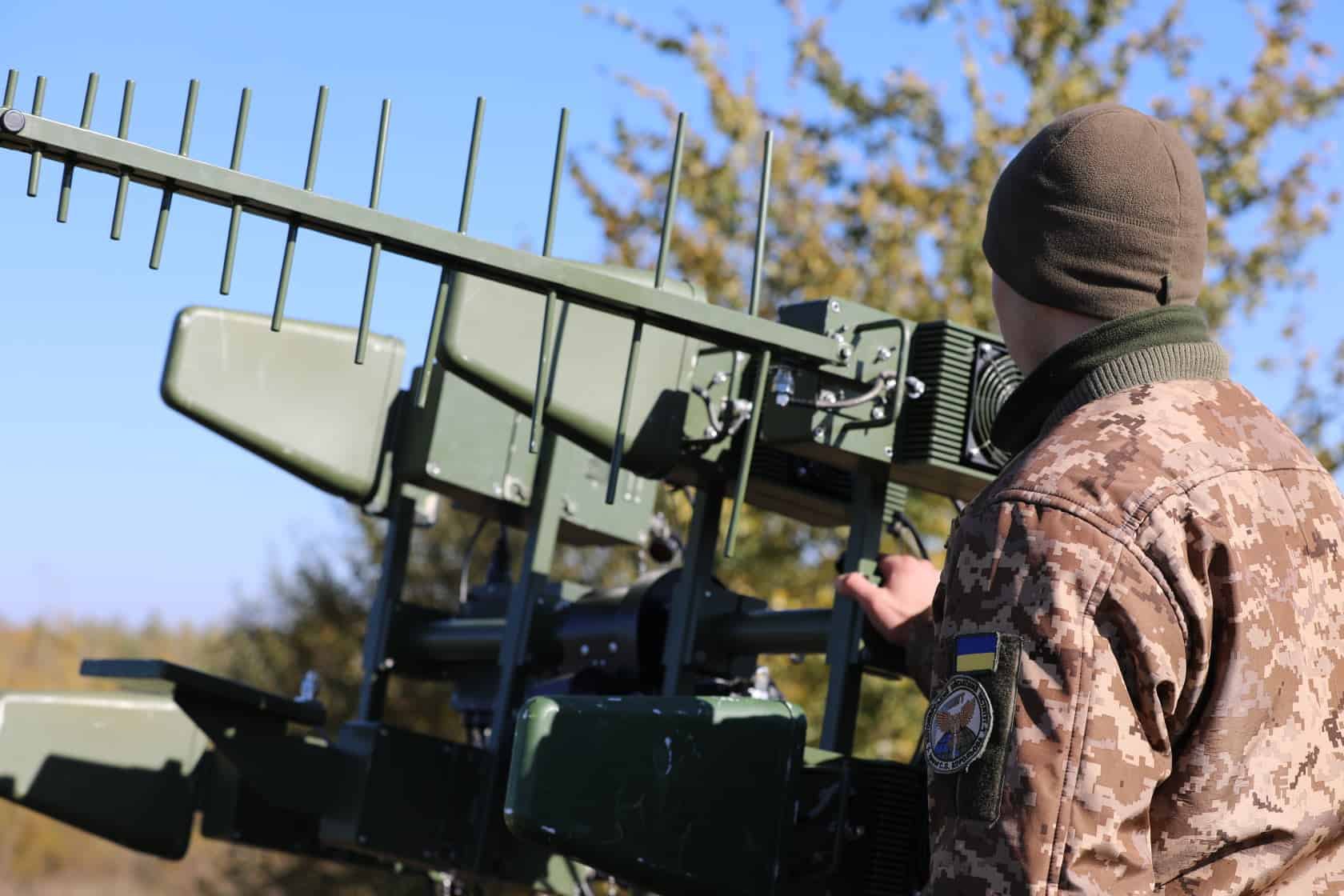 The task of electronic warfare systems is to detect and blind the enemy (photo: facebook.com/GeneralStaff.ua)
The task of electronic warfare systems is to detect and blind the enemy (photo: facebook.com/GeneralStaff.ua)
Modern weaponry is deployed both stationary and on various carriers: from aviation and the navy to armored and automotive vehicles. Ground-based systems form a dome that cannot be penetrated by the enemy. Systems for combat vehicles protect against guided mines and radio-fuzed ammunition. Airborne systems for aircraft disorient interceptor missiles, track enemy radars, and detect targets at long range.
For example, since the first days of the full-scale war, Russia has been using the A-50 long-range radar detection aircraft. But only recently has it been used in conjunction with the S-400 air defense missile system. British intelligence believes that this is a preparation for the deployment of F-16 fighters in Ukraine. And with the help of the A-50, the Russians will hunt them hundreds of kilometers from the front line, at the maximum distance for the S-400.
As for suppression, even cruise missiles can be equipped with such means. In particular, the Taurus HPM is one of the modifications of aircraft missiles that Ukraine has been requesting from its German partners for months.
"When it enters the air defense zone, it emits a signal that knocks out the electronics and temporarily disables enemy systems. That is, neither locators nor all-round view indicators can see it, transmitters do not work, and everything simply 'dies' for 5-10 minutes. After the missile has done its job, you can continue working," Kostiantyn Kryvolap, an aviation expert and former test engineer at Antonov Design Bureau, told RBC-Ukraine.
The importance of electronic warfare, he said, is clearly demonstrated by modern tactics, when a successful attack requires first suppressing enemy electronic warfare, bypassing air defense, and only then hitting targets.
Russian electronic warfare systems: serious potential and a busy front
Long before the invasion, Russia began actively developing, producing, and equipping its troops with modern electronic warfare systems. A large-scale reform started after the 2008 war with Georgia when Russian troops lost several aircraft. According to some reports, by 2012 alone, about $2 billion had been spent on this government program.
The Russians consider themselves leaders in electronic warfare technologies. According to the developers, the Krasukha systems are capable of disorienting AIM-120 AMRAAM homing missiles, and Patriot radars, and working against NATO's AWACS (long-range detection systems that provide targeting for fifth-generation fighters). Furthermore, the Murmansk-BN strategic electronic warfare system allegedly jams everything in the short-wave range of 5000 km.
Speaking of Russian electronic warfare equipment, it must be admitted that these are efficient in interfering with Ukrainian radio and mobile communications, as well as intercepting drones. However, the ability to suppress signals at 5,000 kilometers may be overstated, as they are hardly that powerful, said Oleksandr Kovalenko, a military and political observer at the Information Resistance group.
"What is 5000 km? Can the Russians create a signal-free lane to a hypothetical Lisbon? I doubt it. The fact is that electronic warfare systems are primarily designed for radio reconnaissance, and I have serious doubts that they can interfere with the operation of any equipment at such distances. This has not been documented, and they have not demonstrated such capabilities over long distances," he pointed out.
It is noteworthy that the Murmansk-BN and Krasukha-4 systems were featured in reports by the US Institute for the Study of War (ISW). According to analysts, Russian electronic warfare capabilities played a crucial role in slowing down the counteroffensive in the Zaporizhzhia region, reducing the effectiveness of GPS-guided precision munitions and seriously disrupting Ukrainian communications.
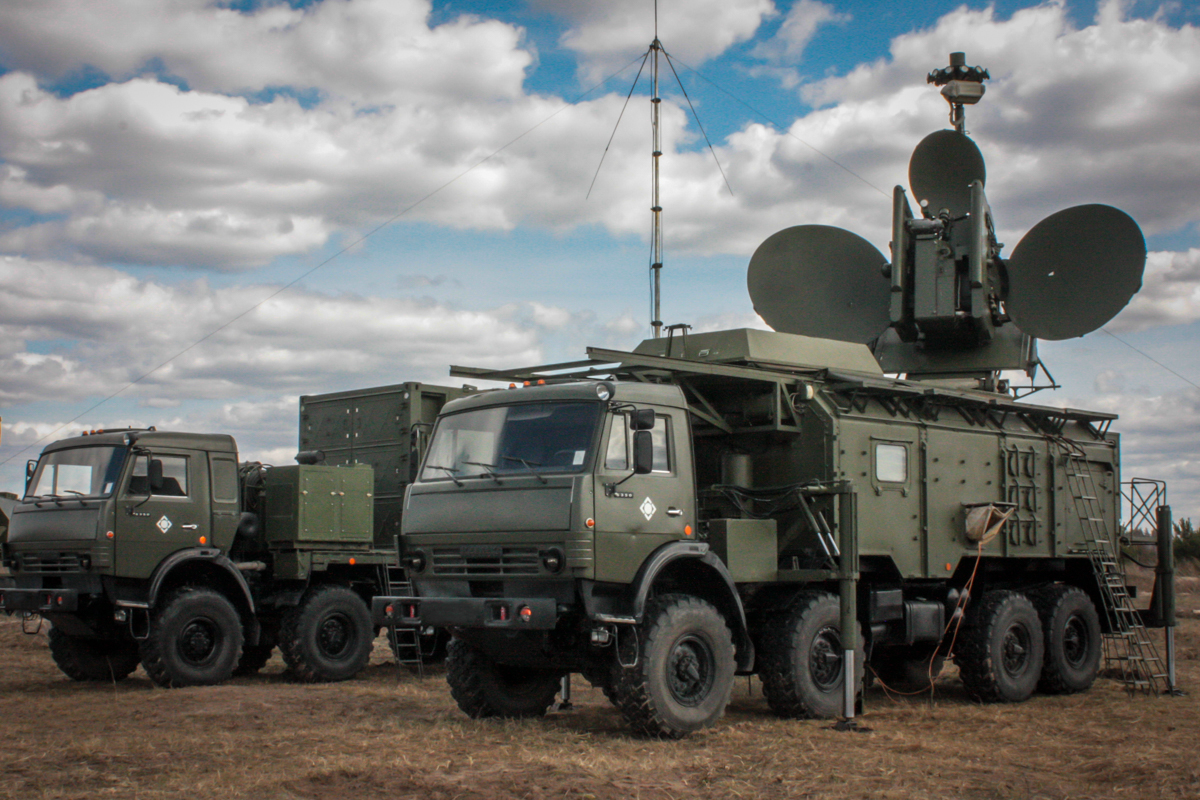 Russian electronic warfare systems Krasukha-4 involved in the war against Ukraine (photo: mil.ru)
Russian electronic warfare systems Krasukha-4 involved in the war against Ukraine (photo: mil.ru)
"Such electronic warfare systems allow to reduce the accuracy of such munitions as Excalibur and ATACMS: to put it bluntly, they lose their spatial orientation in the area of electronic warfare. Moreover, the systems in the S-400 complexes can actually help intercept SCALP and Storm Shadow missiles and GMLRS-guided missiles. This is a serious problem that reduces the effectiveness of all our actions," says Kryvolap.
Valerii Zaluzhnyi, Commander-in-Chief of the Armed Forces of Ukraine, described the strengths of Russian electronic warfare in his article "Modern Positional Warfare and How to Win It" for The Economist. In particular, he pointed out that since 2009, electronic warfare troops have become a separate branch of the Russian armed forces. In total, they have adopted about 60 types of modern electronic warfare equipment and means with high technical characteristics, mobility, security, speed of deployment, etc.
However, Zaluzhnyi sees the main advantage in the establishment of mass production of trench electronic warfare systems - Silok, Piton, Harpoon, Piroed, Strizh, and Lesochek - which are used by the tactical units of enemy forces.
It should be noted that the Strizh-3 systems are being supplied to all fronts. They are capable of recognizing more than 80 models of drones and jamming control channels. Silok is aimed at suppressing drones of all types and is a dome system that covers all satellite navigation bands and frequencies of quadcopters and aircraft-type UAVs, as well as jams radio stations at a distance of up to 3 km.
Lesochek is installed on tanks, armored personnel carriers, trucks, and infantry vehicles. Its peculiarity is the suppression of remote radio detonators and the ability to cover both one vehicle and a convoy of a dozen vehicles. The range of operation against UAVs is up to 200 meters, but its main task is to suppress guided landmines.
According to the spring report of the Royal United Services Institute for Defense Studies (RUSI, UK), while in 2022 there was a high density of Russian electronic warfare systems, now they usually use one main system per 10 km of the front, placing it about 7 km deep into the controlled territory. However, this still ensures a high density - sometimes the occupiers even jam their own drones because of this.
"The Shypovnik-Aero system proved to be particularly effective, as it is subtle and capable of imitating signals from other devices. It also has a wide range to counter UAVs. This contributes to the fact that the level of drone losses by the Armed Forces is about 10,000 units per month," the report says.
Another important function is to intercept communications of the Ukrainian Defense Forces. The report mentions a case when the Russian headquarters warned its units of an artillery strike after decrypting Ukrainian communications on Motorola radios in real-time (presumably, with the help of the Thorn system). In addition, there were cases when enemy units intercepted Ukrainian communications and found that our military was discussing data from Russian radio communications, which had also been previously intercepted by the Ukrainian Armed Forces. RUSI estimates that each Russian platoon has at least one portable electronic warfare device.
"Small stationary electronic warfare devices create interference in the vicinity of a specific position, primarily to counter drones, which are now being used on a regular basis. In general, the so-called trench electronic warfare devices should be in every Ukrainian unit. Because we have problems with Russian Lancets, FPV drones, and UAVs that drop munitions. Even an inexpensive spectrum analyzer can detect an air threat and predict a strike," Kovalenko explains.
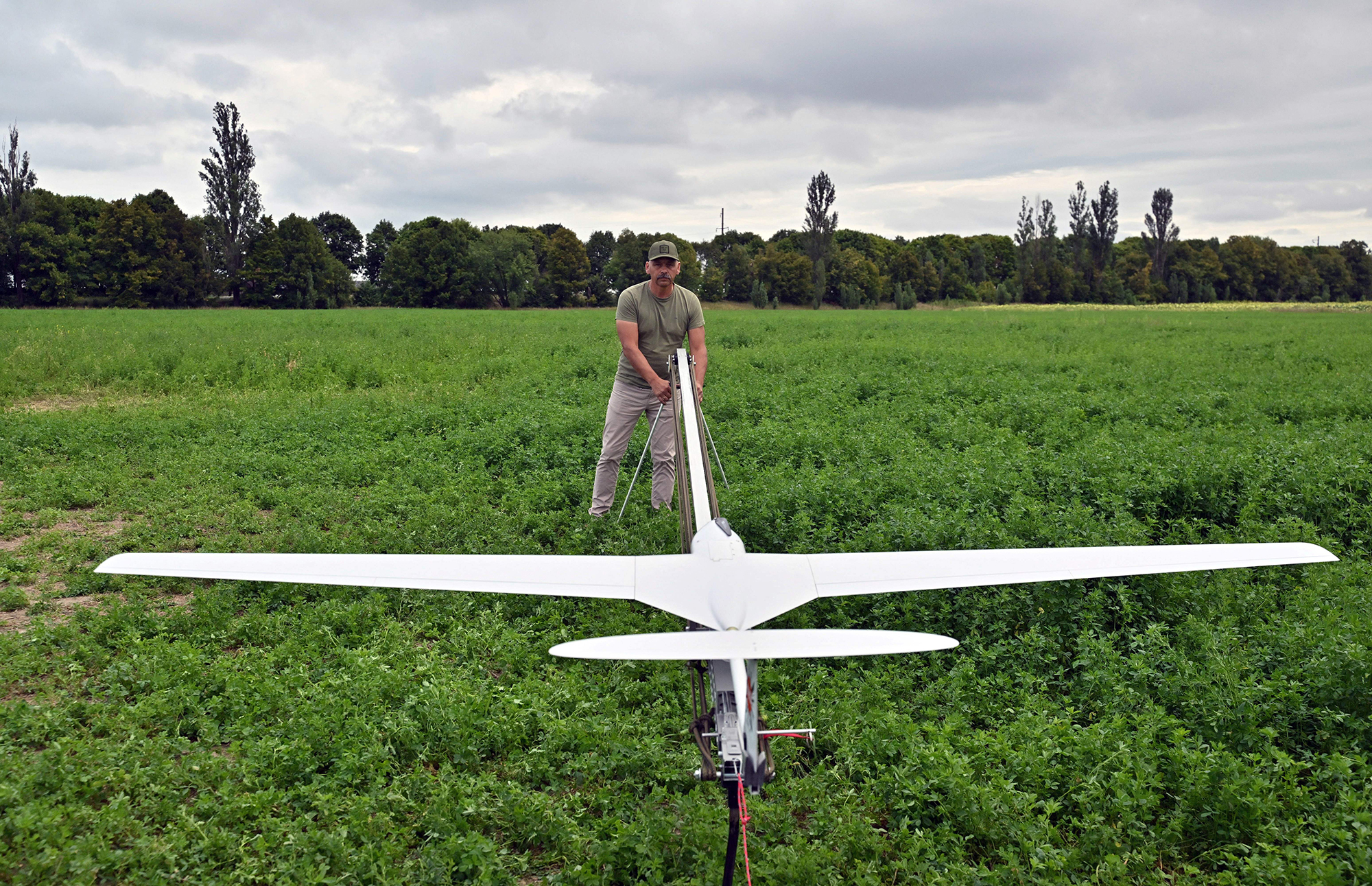 The Ukrainian military is losing up to 10,000 drones a month to Russian electronic warfare (photo: Getty Images)
The Ukrainian military is losing up to 10,000 drones a month to Russian electronic warfare (photo: Getty Images)
Zaluzhnyi's article emphasizes that, despite heavy losses in electronic warfare assets, Russia's advantage remains. And on the Kupiansk and Bakhmut directions, the enemy has created a complex echelon system, the elements of which are constantly changing location.
Ukraine: notable successes in anticipation of the national system Pokrova
The history of Ukrainian electronic warfare began with a post-Soviet development - the Mandat radio interference station. On its basis, the Russians developed the Borysoglebsk and Diabazol systems, and the Ukrainian response was the modern Mandat-B1, which was adopted in 2014. Its response is almost instantaneous, and it is capable of jamming to a depth of 60 km.
With the emergence of new threats both during the anti-terrorist operation (ATO) in Donbas and in other modern conflicts, the development of Ukrainian means has intensified. In particular, the Anklav system was developed to interfere with navigation receivers, control, and telemetry channels at a range of 20 km or more. Its integration into the Polonez system made it possible to detect, identify, jam, and target firing systems.
Since 2016, the Bukovel-AD system has been used to combat drones. The system is designed for early detection of drones, blocking GPS/GLONASS, Galileo, and Beidou control channels. It can detect UAVs such as the Russian Orlan at a distance of 70 to 100 km.
Valerii Zaluzhnyi mentions in his article the modern Anklav and Bukovel-AD systems along with the Hmara and Nota systems, which have proven themselves in combat. According to him, at the beginning of the Russian invasion in 2022, the Armed Forces of Ukraine had about 65% of Soviet-made jamming stations and only 25 new units. Western partners have also helped with means of detecting and electronic warfare against UAVs, anti-drone guns, tactical mobile positioning systems, etc.
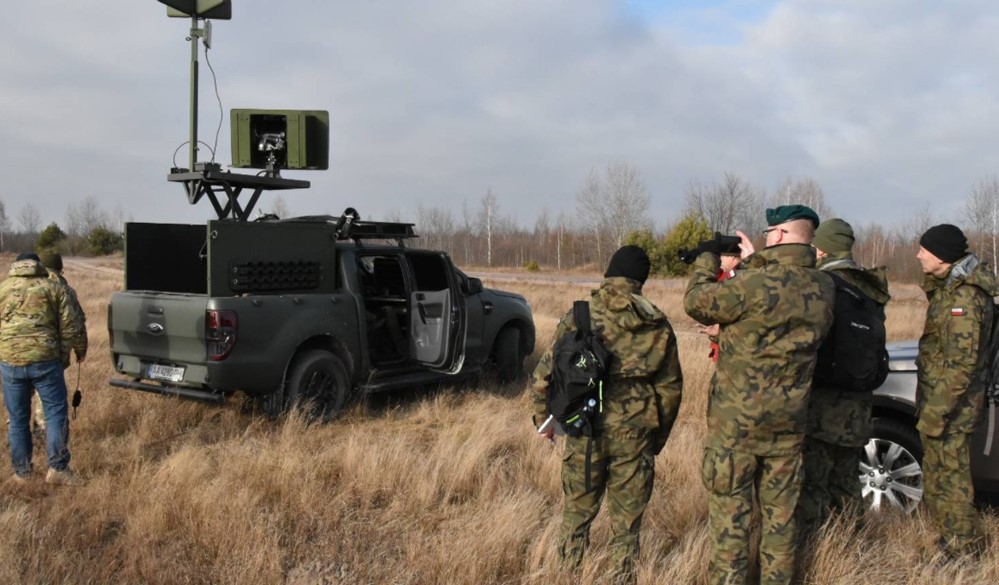 Bukovel-AD complex on the border with Belarus (photo: informnapalm.org)
Bukovel-AD complex on the border with Belarus (photo: informnapalm.org)
Electronic warfare is a very promising area and will play an increasingly important role on the battlefield. According to Andrii Starikov, a representative of the General Staff of the Armed Forces of Ukraine, the full-scale war has prompted the development of new systems that sometimes surpass the enemy's weapons in their performance. In addition, thanks to partners, the army has received equipment capable of both fighting drones and disrupting the command and control of Russian troops.
"Electronic warfare is a direction that can have an effective impact on the battlefield without fire intervention. If an artilleryman runs out of shells or an infantryman runs out of ammunition, electronic warfare specialists never run out of electronic interference. This is an inexhaustible source," Starikov said in September.
The emergence of promising Ukrainian electronic warfare systems is confirmed by recent news. Recently, the Piranha AVD 360 complex was presented to protect armored vehicles and personnel. Within a radius of 600 meters, it creates a protective dome within which a copter or kamikaze drone cannot receive commands and transmit data. As a result, the "bird" either hovers in the air, crashes or falls. It also suppresses satellite navigation, such as the Russian GLONASS. Piranha has already passed field tests and is ready for mass production.
Recently, it became known that some units of the Defense Forces used mobile detectors (direction finders) Eter: trench electronic intelligence devices that operate in a passive mode. They allow us to see where Russian electronic warfare systems are located in order to plot a safe route for drones and warn of enemy UAVs. Eters also help to assess where the enemy has concentrated its main forces under the cover of electronic warfare and to record and map their location.
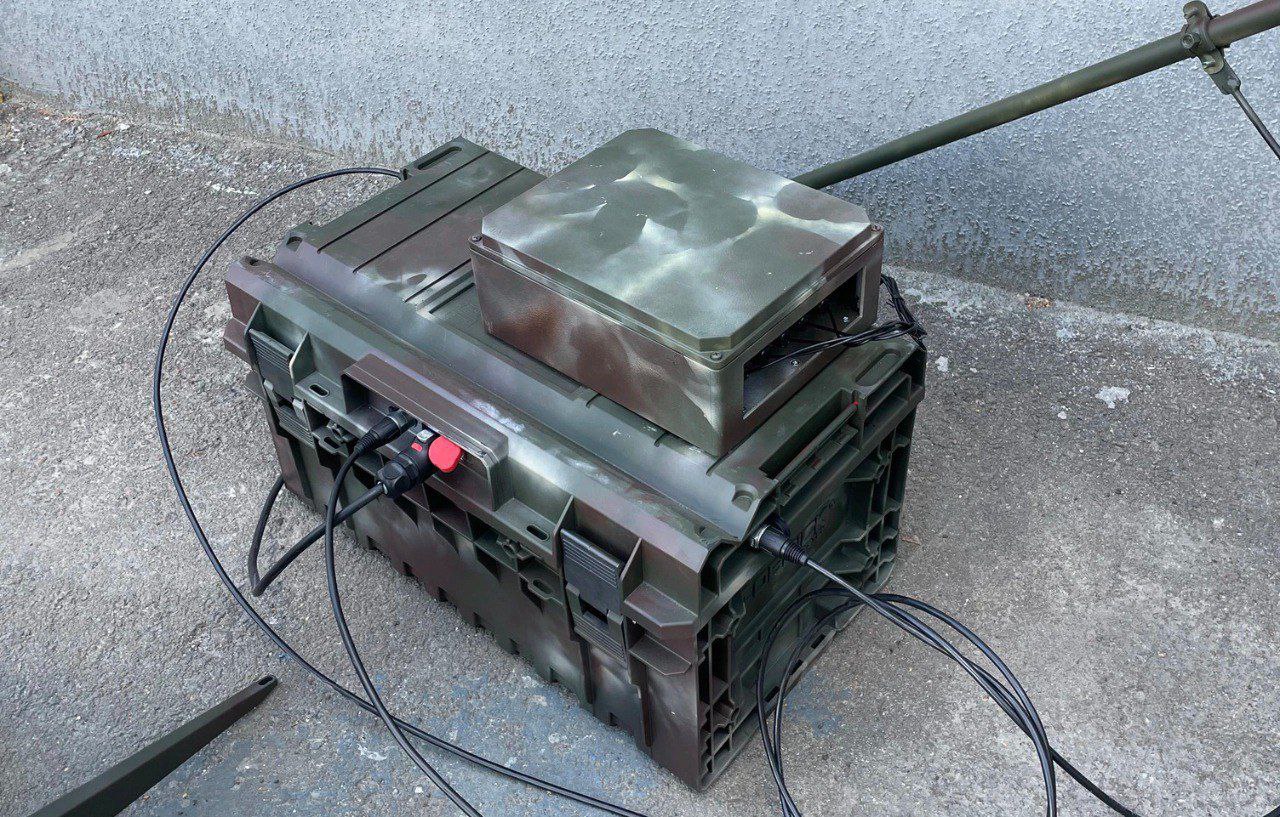 Mobile direction finder Eter will allow to record enemy activity in the forefront (photo: t.me/zedigital)
Mobile direction finder Eter will allow to record enemy activity in the forefront (photo: t.me/zedigital)
The development and implementation of elements of two situational awareness systems in the management processes continues: Graphite, for automated transmission and display of information on the flight of small UAVs; Quartz, for collecting, processing, displaying data, and controlling electronic warfare equipment. In his article, Valerii Zaluzhnyi also spoke about the deployment of the Pokrova national electronic warfare system against cruise missiles and drones. Its task is spoofing, that is, replacing the coordinates from the satellite navigation system.
According to Defense Express, this means that when Pokrova is turned on, navigation systems (including civilian ones) may not work at all or show incorrect data. For some weapons, this will be critical. For example, Russian Shaheds use satellite navigation and a rather primitive inertial navigation system, which, when the signal is lost, allows them to fly towards the target, but without taking into account wind and error correction. We are talking about a deviation of 5 km over a 100 km stretch. In the case of spoofing, the Shahed would fly a false route and, accordingly, would not hit the target.
Almost nothing is known about the Pokrova system, which is not surprising, as the introduction of new equipment and new tactics takes a short time in the context of the Russian-Ukrainian war, explains expert Kostiantyn Kryvolap.
"I have heard about it from the communications people, but it is very classified information. Is such a system possible? It is possible. Can it work effectively? It can. Does it work to the extent it needs to? I do not know. I have not yet felt the results: Russian Lancets, reconnaissance aircraft, and Shaheds are still flying, so it is not yet as effective as we would like. In the 'fog of war' it is difficult to say anything about it," he added.
***
In terms of electronic warfare, Ukraine is in a catch-up status. And even the superiority over Russia will not be a gamechanger that will ensure a quick victory. With the transition to trench warfare, such systems will be increasingly used to defeat enemy electronic warfare.
According to expert Oleksandr Kovalenko, the Russians have problems with the production of high-tech equipment, they are forced to look for workarounds, while Ukraine has a good training school, and with access to the achievements of its allies, it is likely to continue to show success. At the same time, judging by trends, the emergence of new means may complicate the use of Mavic and other civilian drones.
"But they are not standing still. There are drones with artificial intelligence that guides them to the target in case of loss of communication and control. Some models are more resistant to interference. On the one hand, the number of trench electronic warfare systems is growing, and on the other hand, drones are also evolving," Kovalenko summarized.
